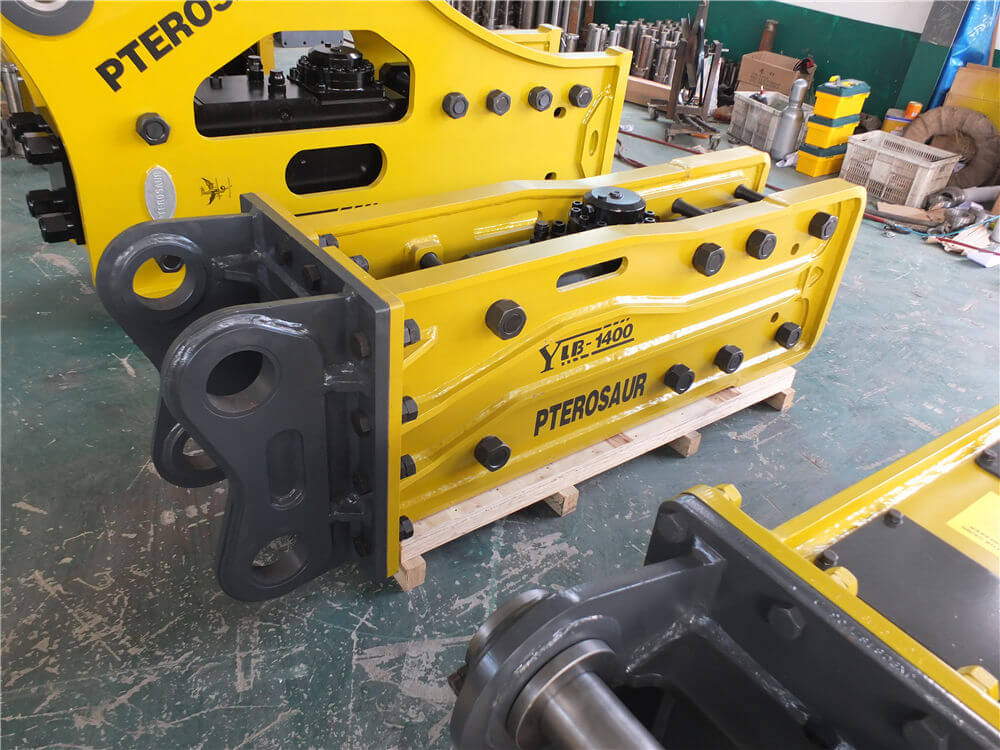Understanding Hydraulic Hammers: Impact Energy and Efficiency
Hydraulic hammers have become an essential tool in various industries, particularly in mining and construction, due to their effectiveness in rock breaking and pile driving applications. This article delves into the mechanics of hydraulic impact hammers, focusing on their impact energy, efficiency, and the advancements that have been made in this technology.
The Role of Hydraulic Hammers in Rock Breaking
Hydraulic impact hammers are designed to break rock through a process that involves high-energy impacts. The operation of these tools is complex, as they must effectively transfer energy to the material being worked on. The theoretical and numerical analysis of the rock-breaking process by impact hammers reveals that understanding stress wave theory is crucial. This theory helps in creating mathematical models that predict how energy is transmitted through the rock, leading to better design and operational strategies.
Energy Transfer Ratio: A Critical Metric
One of the key performance indicators for hydraulic pile driving hammers is the energy transfer ratio. This metric represents the proportion of impact energy that effectively transfers to the pile during driving. Research has shown that hydraulic hammers typically outperform diesel hammers in this aspect due to their ability to minimize energy losses during freefall. Despite its importance, the energy transfer ratio is not routinely measured in practical applications, indicating a gap that needs to be addressed to enhance operational efficiency.
Advancements in Hydraulic Hammer Technology
Recent advancements in hydraulic hammer technology have led to significant improvements in both efficiency and versatility. For instance, the HHK A series offers an adjustable stroke of up to 1.2 meters and boasts up to 20% more efficiency compared to traditional free-fall hammers of similar weight. This enhanced efficiency allows for the effective driving of various pile types, including precast concrete and steel piles, which is crucial in both onshore and offshore construction projects.
Additionally, the market has seen the introduction of smaller hydraulic hammers, such as the Rammer 2577E, which are suitable for carriers in the 21 to 32-tonne range. These hammers have an impressive impact rate of 450 to 750 blows per minute, making them ideal for tighter spaces and limited headroom applications.
Characteristics of Impact Energy and Blow Frequency
The power of a hydraulic hammer is fundamentally determined by two main factors: impact energy and blow frequency. High impact energy allows for deeper penetration and more effective breaking, while an optimal blow frequency ensures that the hammer operates smoothly and efficiently. Models such as the Rammer 2166E and various hammers from leading manufacturers emphasize these characteristics, showcasing their suitability for different applications and carrier types.
Conclusion
The ongoing innovation in hydraulic impact hammer technology is reshaping the landscape of construction and mining operations. By enhancing energy transfer efficiency and understanding the impact dynamics involved, industries can better optimize their use of hydraulic hammers. As the demand for efficient rock breaking and pile driving continues to grow, so too will the importance of these tools in facilitating safe and effective construction practices.



































